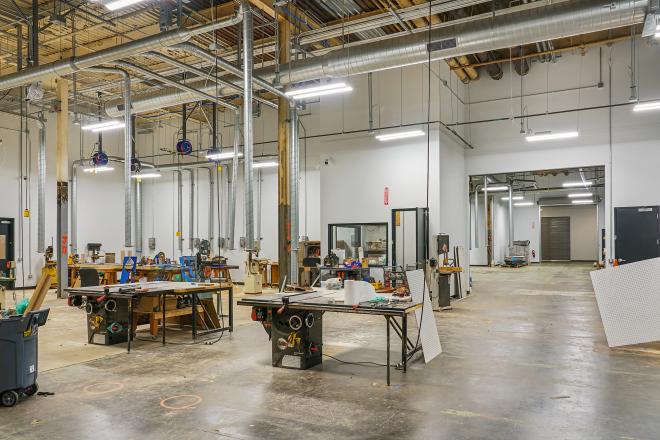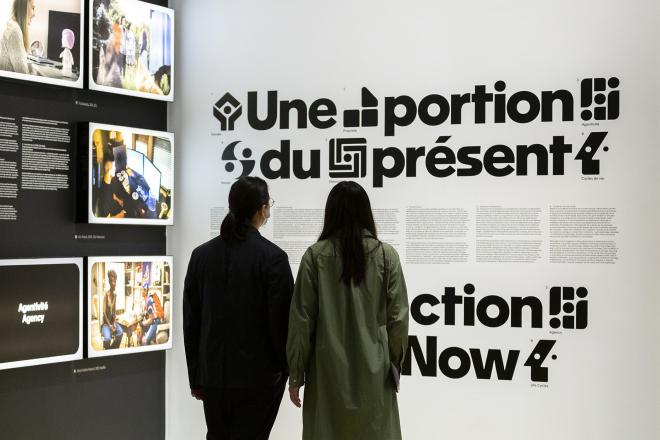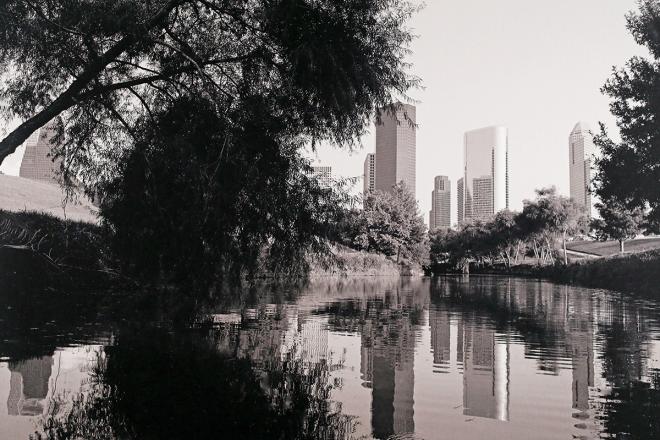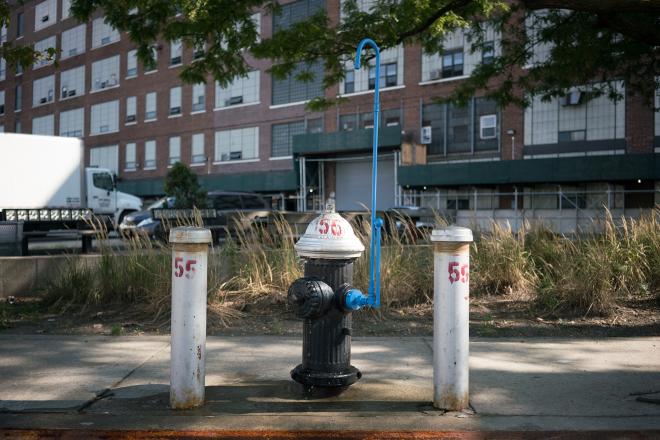
Light Rail Construction, Photograph by Christof Spieler
OffCite continues its coverage of the METRO referendum. Colley Hodges cut through the confusion in our last post. Below, METRO board member and longtime Cite contributor Christof Spieler calls for vision beyond the immediate politics.
This Tuesday, Houston voters face a choice on transit. A “yes” vote will make more of the one cent METRO sales tax available for transit—but that additional funding is specifically allocated so it will not go to rail. A “no” vote could mean more money for rail—or it could lead to legislative action that would actually cut transit funding or even dismantle METRO. In either scenario, the future of the University Line—which was specifically approved by voters in 2003 to be completed by 2012—is uncertain. The most important new connection in the Houston transit system could be 20 years away.
Meanwhile, other cities are rapidly expanding transit. By 2013, Dallas will have 90 miles of light rail radiating out from Downtown to the suburbs. Salt Lake City just opened two new lines and is completing another to the airport. Denver is adding a fourth light rail spoke to its system and building electric commuter rail to the airport.
So, what’s different in Houston?
We’ve been fighting about rail transit for a long time. The second issue of Cite in 1982 was devoted to the implications of an elevated heavy rail down Main Street in Downtown Houston. The proposal Cite was discussing went down to defeat at the ballot box the following year. METRO tried again with a series of light rail proposals and in 1988 went back to the voters with a new system plan. That got caught up in its own set of politics: by 1990, it had morphed into a monorail plan, which was then killed by Bob Lanier, elected mayor on an anti-rail platform, in 1992. Rail finally happened in 2000, when the METRO board voted to build the Main Street Line despite Congressman Tom Delay’s killing federal funds for it.
In 2003, it seemed as if the issue was settled. Voters passed a massive referendum proposal that was to set the stage for transit for the next 20 years. It included a first stage of four light rail lines, to be complete by 2012, and a master plan for a 65-mile system, to be complete by 2025. But the fights picked right back up after the election. Three of the four lines were changed from light rail to Bus Rapid Transit in 2005, upsetting the neighborhoods they served. The fourth line got bogged down in a new political fight over ridership and cost analysis, as well as the conflict between the majority of Montrose residents, who favored building a section of the line down Richmond Avenue, and businesses on Richmond and residents of Afton Oaks, who disagreed. Soon, Congressman John Culberson was threatening to cut federal funding. In 2007, the METRO board chose the Richmond alignment and, in a bid to build support, changed the other lines back to rail. But in the process, METRO had soured relationships in Houston and Washington, D.C.; six years after the referendum, in 2009, a new mayor was elected promising to clean up METRO.
That brings us to today. We have improved relationships with the Federal Transit Administration enough to get $900 million in federal funding. Three new rail lines are now assured, and construction is 50 percent complete. In 2014, Houstonians can ride the train to the Near North Side, the Theater District, the new Dynamo stadium, the East End, the Third Ward, the University of Houston, and Texas Southern University. Houston will have a rail system for the first time.
But the 2008 recession left a huge hole in METRO’s finances. Instead of continuing to grow, sales tax revenue dropped, and current projections don’t show it catching back up. The 2008 projections would have been enough to build the University Line without federal funding; the 2012 projections, however, show enough money to complete and operate three light rail lines while keeping the bus system at its current size, but no more. That leaves us with three-quarters of the 2012 system that voters approved in 2003—and, ironically, the missing line is the one with the highest ridership and the one that connects the most major employment centers.
Even with the 2008 slump, we have ways to get the University Line built. The key political compromise in the 2003 referendum was that METRO would continue sending 25 percent of its sales tax to the City of Houston, Harris County, and several smaller cities to build roads and bridges until 2014. Letting that program expire—or even cutting it by a third—would leave enough money to build rail in Houston. Alternately, the program could be continued, but the City of Houston would agree to pay for the roadwork associated with the new lines. That, plus a bond issue that could easily be supported by sales tax revenues, would fund the University Line.
But through this summer and fall, no matter how hard METRO board members tried to figure out a way to keep the promises of 2003, they couldn’t gather enough political support. The 2003 referendum, it turns out, was not a consensus but a truce. Enough political leaders agreed long enough to get it passed, but that coalition did not outlast the election. Anti-transit forces are well organized and well funded; pro-transit groups are able to mobilize people but not money. Political leaders see METRO as a liability. We have regional agreement on roads but not on transit, despite the fact that a majority of the public wants to see rail expansion. Regardless of which way it goes, the 2012 referendum represents a failure to build the kind of consensus it takes to really make good transportation projects happen.
What would it take to get real political agreement?
In Salt Lake City, it took Envision Utah, a massive two-year planning effort in the late 1990s that brought together 10 counties, 91 cities, elected officials from the governor to city council members, business leaders, and the public to decide how to accommodate 1.1 million more residents by 2020. That vision included new urban and suburban pedestrian-centered development connected by 10 light rail lines and commuter rail; the region has steadily been building that plan ever since.
In Dallas, it took a partnership among the local cities that have grown up since the 1960s when an agreement was reach between Dallas and Fort Worth to build DFW airport. The map of the Dallas area’s DART system reflects this coalition: DART has 13 member cities, and all are on or near a rail line.
In Denver, it took cooperation among multiple transportation agencies. The first expansion of the short “starter” light rail line combined light rail with a grade-separated freight rail line; the second development combined light rail with a major freeway expansion. In both cases, the transit agency worked with the Colorado Department of Transportation: highway funds and transit funds were pooled to build the projects.
In Houston, we have had none of these ingredients. We have talented regional planners in Houston, and we have had rounds of public workshops, but the resulting final plans have been little more than individual agency plans stapled together. The business community has helped fund referendum campaigns, but no prominent business leaders have come out publicly speaking in favor of transit. Because the city of Houston is so big, it has never had to cooperate with other cities around it. And despite a significant improvement in the city-county relationship since Judge Ed Emmett, head of Harris County’s commissioners, and Houston Mayor Annise Parker took office, the city and the county still disagree more than they agree.
Transportation agencies have trouble working together: even though the mayor appoints both the city public works director and the majority of the METRO board, historically, the interaction between the city and METRO staff has been more adversarial than cooperative (though it has also improved in recent years). The Texas Department of Transportation rarely considers transit in its highway projects; in fact, current plans for expanding U.S. Highway 290 would actually reduce the number of park-and-ride lots in that corridor.
But perhaps the city-county cooperation that put this referendum on the ballot can lead to a larger agreement, and two years from now, with METRO in better financial shape and new rail lines in operation, it could be the basis for a political coalition to expand transit. And perhaps we can move beyond METRO's funding base by building partnerships; already, there's a plan for the Uptown line to be built as bus rapid transit using funding provided by the Uptown Tax Increment Reinvestment Zone.
When we put our minds to it, Houston can get things done. We built a port 50 miles from the ocean, created the world’s greatest medical center in the middle of open prairie, and convinced the federal government to base its astronauts in a hurricane zone 870 miles from the launch pad. Each of those achievements—and all the cities that have built successful transit—shares a common element: elected officials have advocated, built public support, and brought the agencies together. Bureaucrats don’t build transit; leaders do.












